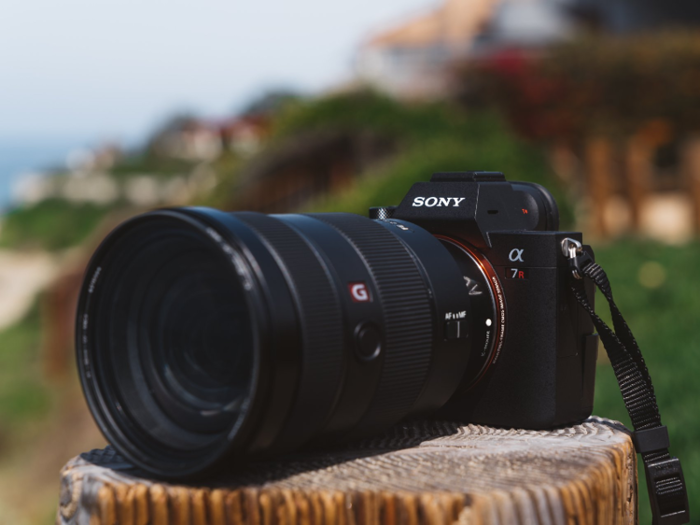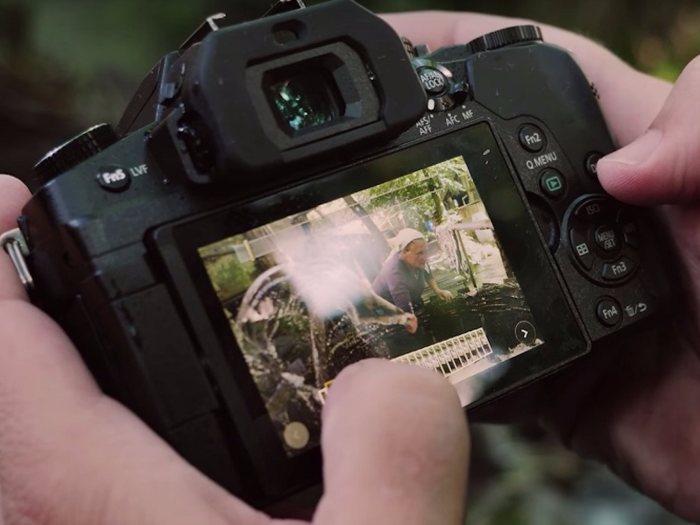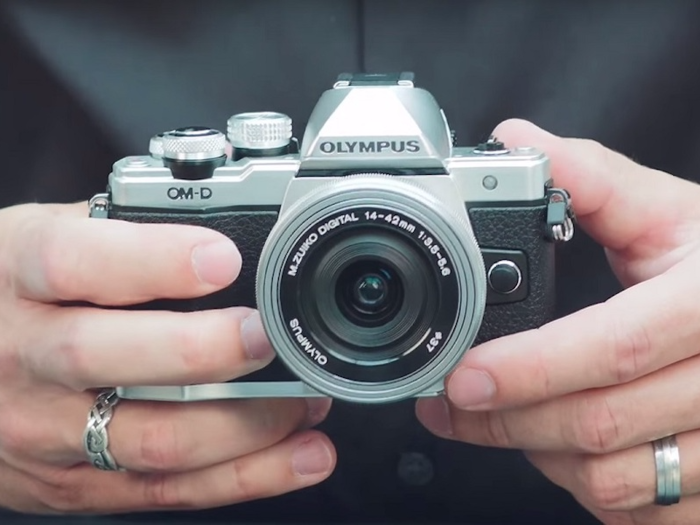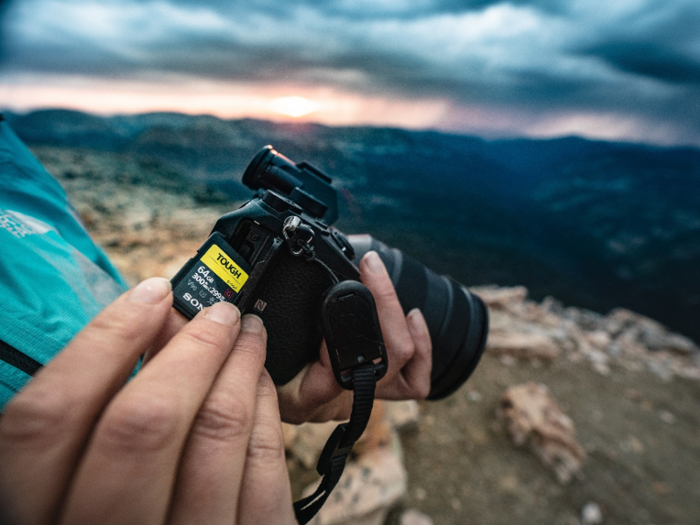- Home
- slideshows
- miscellaneous
- The best mirrorless cameras you can buy
The best mirrorless cameras you can buy
The best mirrorless camera overall

The best mirrorless camera when money isn't a problem

The Sony A7R III is an outstanding mirrorless digital camera, creating images that will rival intermediate level DSLRs that have a similar price point. The video quality with the A7R III is excellent too, and according to Gizmodo, “it does an excellent job of smoothly auto-tracking focus while recording.”
The camera's full-frame image sensor is the largest physical size of image sensor that’s found in a camera for the consumer market, so this Sony model’s image sensor sits at the top of the heap in mirrorless cameras. You won’t find another mirrorless camera that has 42.4 megapixels of resolution, either.
The A7R III has an extremely clear viewfinder along with a sharp main display screen you can use to frame the scene, which are two features praised in the Steve Huff Photo review.
The unit’s autofocus system works extremely fast, giving this Sony mirrorless camera a high level of performance.
Battery life is seriously improved from the previous model, the A7R III, allowing for about 650 frames — or one relatively full shoot (still, keep an extra charged battery or two on hand).
You will pay a lot for this camera, so we wouldn’t recommend it for beginners just looking at getting their feet wet. Furthermore, you’ll need to be an experienced photographer to take advantage of the Sony camera’s metering and white balance capabilities, as adventure photographer and photojournalist Chris Burkard explains (this is filmed by and for Sony).
But when you’re ready to step up your photography game and want a mirrorless ILC, nothing beats the Sony A7R III’s image quality.
If you want to spend a little less, and maybe give yourself a little more room in your lens budget, check out the Sony A7III, which is still a professional-grade camera but offers half (24.2) the megapixels of the A7R III, and is more than sufficient so long as you’re not looking to blow up billboard-sized images. — Kyle Schurman and Owen Burke
Pros: Full frame image sensor creates amazing photos, excellent viewfinder quality, works fast with a high-quality autofocus system, intermediate and professional photographers will appreciate the advanced features
Cons: Older model, extremely high price point, not really aimed at beginners, poor battery life
Buy the Sony a7R III mirrorless camera on Amazon for $2,798 and up (body only — price increases as you add lens kits)The best mirrorless camera for video

The Panasonic Lumix G85 has a great set of features for photographers looking to buy their first advanced interchangeable lens camera. This model ships with a kit lens, giving it a reasonable price point, but its greatest feature is the ability to shoot video at up to 4K resolution and 30 frames per second.
The G85 also can record full HD video at 60 frames per second, producing a strong combination of video recording capabilities. You don’t need a separate digital camcorder if you own this Panasonic camera.
The Camera Labs review mentioned the importance of having a long battery life in a camera that is designed for video recording, and the G85 delivers. However, one Amazon reviewer says the camera’s autofocus system doesn’t always work accurately when shooting video in tough lighting conditions.
The touchscreen simplifies the process of operating this Lumix G85 camera, making it run a lot more like a smartphone camera. The G85 includes a viewfinder, too, which gives it a leg up on some other mirrorless cameras, according to TechRadar.
The image sensor in the G85 delivers 16 megapixels of resolution in an image sensor that is similar in size to an APS-C sized sensor. The Steve’s Digicams review says the still image and video quality are both excellent with the G85.
One Amazon buyer mentioned the low weight of the Lumix G85, which makes it easy to carry with you anywhere.
Pros: Excellent video quality and frame rate with 4K resolution, good still image quality, LCD has touch capabilities for easy operation, long battery life, good price point as it also contains a kit lens
Cons: Still image resolution limited to 16MP, some autofocus problems in tricky lighting conditions
Buy the Panasonic Lumix G85 mirrorless camera (with kit lens) on Amazon for $897.99The best mirrorless camera on a budget

One of the biggest drawbacks to upgrading to an advanced interchangeable lens camera is the cost. That’s one of the reasons why we really like the Olympus OM-D E-M10 Mark II mirrorless camera. It has a low price point compared to other advanced models, yet provides a strong level of performance.
The OM-D E-M10 Mark II is a fast performer, too, offering a maximum burst mode setting of 8.5 frames per second. Unlike some mirrorless cameras, the Olympus Mark II has a built-in viewfinder that yields a sharp image. It's a great choice for the price, according to Steve’s Digicams.
Additionally, the main display screen with the E-M10 is sharp and provides touch control, which is great for people who are migrating from smartphone cameras to this Olympus model, according to the Photography Blog review. In fact, one Amazon buyer says the overall user interface of this camera is excellent for inexperienced photographers.
The Olympus E-M-10 has an image sensor similar in size to an APS-C sized sensor, offering 16 megapixels of resolution. The Imaging Resource review says this model does a great job recording in the RAW image format. It records video in full HD resolution, rather than 4K.
A few Amazon buyers reported problems with the longevity of the Olympus OM-D E-M10 Mark II, though.
Pros: Excellent price point for an interchangeable lens camera, better than expected performance levels, high-quality viewfinder and display screen, good performance in RAW image format, easy to use interface
Cons: Still image resolution and video resolution lag some other mirrorless cameras, some longevity questions
Buy the Olympus OM-D E-M10 Mark II mirrorless camera on Amazon for $449 and up (body only — price increases as you add lens kits)The best mirrorless camera with the most lenses

If you ask experienced photographers why they have shied away from switching from DSLRs to mirrorless ILCs, one reason you’re sure to hear is the limited number of lenses that are available. DSLR camera models have been around a lot longer, and they have a lot more lenses from which to choose.
To gain access to more lenses with a mirrorless camera, we’d recommend the Canon EOS M6. This camera can use Canon lenses made specifically for its line of mirrorless cameras (with an M mount), but by making use of a mount adapter, the M6 can also fully use many Canon DSLR lenses, opening up a whole new world of photography options.
With the adapter, any Canon lens made in the past three decades is usable with the M6, according to the Ken Rockwell review. An Amazon buyer was excited to have the option to use some of his old DSLR Canon lenses with this model.
The EOS M6 has an APS-C sized image sensor offering 24.2 megapixels of resolution, resulting in strong image quality, according to the Imaging Resource review. It has a nice set of wireless connection capabilities, too, including Bluetooth and Wi-Fi.
The M6 creates some amazing images, yet it remains a lightweight camera that works well for shooting one-handed, according to Steve’s Digicams.
However, one Amazon buyer was disappointed in the video shooting options with the Canon M6, especially in less than ideal lighting conditions.
Pros: Trusted Canon name in a mirrorless camera, purchase an adapter to gain access to Canon DSLR lenses, good image quality, high-resolution count, wireless connectivity options, lightweight camera
Cons: Some problems with video recording, no viewfinder included, must buy lens adapter separately
Buy the Canon EOS M6 mirrorless camera on Amazon for $479 and up (body only — price increases as you add lens kits)The best cameras and mounts to switch from a DSLR to a mirrorless camera

- If you're looking to switch over from a DSLR camera, Canon and Nikon have both made it remarkably easier and less expensive because now you can do so and keep the lenses you already have.
- Canon's EF to EOS Adaptor keeps Autofocus (AF) and Image Stabilization capabilities for EF and EF-S-mount lenses. We like the EOS R for an upgrade, which has a 30.3-mp full-frame sensor and shoots 8 frames per second.
- Nikon's FTZ Mount allows for tidy interchanging (and AF/AE) between E, G, and D lenses on Z Mount cameras. For an upgrade, check out the Z6 or Z7.
- Sony's A-Mount to E-Mount adaptor covers all your old Sony A-mount cameras. For an upgrade, look into our top pick, the A7RIII.
Where image stabilization and overall quality and noise reduction made concessions with third-party lens adapters that sufficed, Canon and Nikon have painstakingly taken matters into their own hands to make the transition seamless.
While these adapters aren't exactly cheap, just consider the utterly prohibitive cost of replacing all of your lenses so you can switch to the latest and greatest.
If you're still reading, that probably suggests you already have a healthy quiver of either Canon or Nikon lenses.
The best mirrorless Canon to upgrade to is the EOS R. It shoots 8 frames per second, has a 30.3-megapixel full-frame sensor, and is easily compatible with all your old Canon lenses.
The best Nikon mirrorless camera to upgrade to is the Z6, which has a more-than-sufficient 24.2-megapixel full-frame sensor and shoots 12 frames per second. Sidenote: This is a perfect camera for an up-and-coming photojournalist.
And, for Sony, it's a no-brainer: The A7RIII is the golden standard, and the a7III is also plenty fine if the price tag on the A7RIII is too prohibitive.
Popular Right Now
Popular Keywords
Advertisement